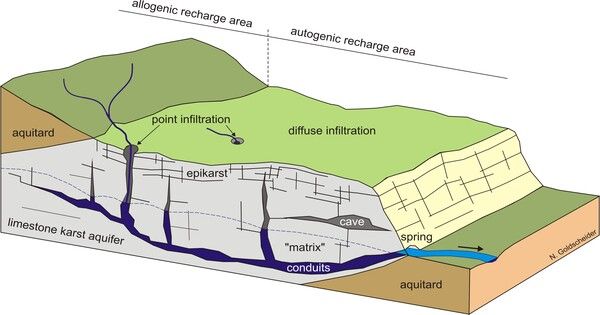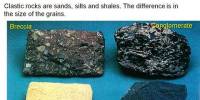Fault zone hydrogeology is the study of how brittlely deformed rocks influence fluid flow in various lithological environments, including clastic, igneous, and carbonate rocks. Because of their distinct structural and hydraulic qualities, they have a substantial impact on hydrogeology. Understanding fault zone hydrogeology is critical for several applications, including groundwater management, resource exploitation, and geotechnical engineering.
A fault zone can either facilitate or restrict fluid motions, which can be defined as permeability. This is because various deformation mechanisms in rocks can vary porosity and permeability within a fault zone. Groundwater (fresh and marine) and hydrocarbons (oil and gas) are the most common fluids involved in fault systems.
Here are some key aspects of fault zone hydrogeology:
- Permeability Enhancement: Fault zones frequently have higher permeability than surrounding rock due to fracture and fault gouge. Fault movement can cause cracks and faults that operate as conduits for fluid flow, increasing the permeability of the rocks. This can lead to favored flow channels for groundwater transport.
- Anisotropy: Fault zones can have high hydraulic anisotropy, which means that their permeability changes depending on the direction of flow. This anisotropy is generally caused by the orientation and features of fractures inside the fault zone.
- Hydrogeological Barriers: While fault zones might increase permeability locally, they can also operate as a barrier to fluid movement in some situations. Clay-rich fault gouges and mineralization along the fault can form hydraulic seals, impeding groundwater transport over the fault.
- Fluid Mixing and Chemical Reactions: Fault zones can promote fluid mixing between different aquifers or formations, leading to changes in water chemistry. Additionally, the presence of fault minerals can influence chemical reactions, such as mineral dissolution and precipitation, affecting groundwater quality.
- Seismicity and Fluid Flow: Seismic activity along fault zones can induce changes in pore pressure and fracture permeability, affecting groundwater flow patterns. Conversely, fluid flow within fault zones can also influence local stress conditions and potentially trigger earthquakes.
- Groundwater Resource Exploration: Fault zones are often targeted for groundwater resource exploration due to their enhanced permeability. However, the complex hydrogeological characteristics of fault zones require careful investigation through techniques such as borehole logging, geophysical surveys, and hydraulic testing.
- Environmental Implications: Understanding fault zone hydrogeology is critical for determining the environmental impact of activities like mining, geothermal energy production, and garbage disposal. If not managed appropriately, fault zones might become favored paths for pollutant transport.
Overall, fault zone hydrogeology has a considerable impact on groundwater flow and other geological processes. These difficulties must be studied and understood to ensure long-term water resource management and environmental responsibility.
















